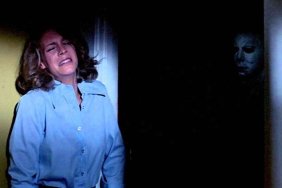Welcome back to CraveOnline‘s Free Film School. The reason the internet was invented.
Halloween is fast encroaching upon us, and for people my age (i.e. people born in between 1974 and 1984) that means one thing: horror sequels. True, there are no horror sequels actually in theaters this year (the Saw series is over, and Paranormal Activity 5 was delayed), but there was once a time when four (4) well-known horror franchises were running concurrently. 1988, to cite the height of the horror sequel craze, saw A Nightmare on Elm Street 4: The Dream Master, Friday the 13th Part VII: The New Blood, and Halloween 4: The Return of Michael Myers. The Texas Chainsaw Massacre series missed ’88, having sequels in ’86 and ’90.
All of this glorious horror history – so prevalent during my childhood – means I have sequels on the brain this time of year. I’m going to spin that obsession into a lecture for you, my dear pupils. I am going to dictate the proper way to make a sequel. Here are some rules to follow if a sequel is proposed.
The notion of the sequel is perhaps a mite moribund in this age of planned out multi-film franchises. Thanks to the success of Harry Potter, The Lord of the Rings, and the Avengers cycle, studios are now often planning entire three-to-five-film series all at once, planning out interconnected screenplays, and striking deals to build a franchise from the ground up (I hope this can be done with a wholly original idea someday). Part of me winces at this notion, as I grew up under a different ethos: for many decades in Hollywood, it was taboo to mention a sequel before the original had been released. But then, another part of me celebrates this daring business model, as it often ensures a strong sense of dramatic and visual continuity.
Sequels are always, however well-planned, a dodgy proposition. No matter how skilled a follow-up they may be, there is always a whiff of exploitation about them. They exist as an echo of love for the original. Enterprising filmmakers can, of course, make the sequels and follow-ups to be larger and more complex than the originals (The Godfather Part II springs to mind, as does The Empire Strikes Back), but they rely on the love of the originals to get started. The original is the shortcut for the sequel. The sequel, by its very nature, has to come second. All sequels, then, must lack in originality, surprise, and, in many cases, introductions.

But I’m not going to talk much about the dramatic necessity for sequels. Are they necessary? Hardly ever. Usually a first film will wrap everything up nicely. But sequels will be made until humanity snuffs out, and good sequels are being made all the time. I will not fight the notion.
My first cardinal rule of making sequels: They must be able to stand alone as feature films. They must have all the regular accoutrements of a cinematic drama, including a slow build, a good story, intriguing character developments, and a satisfying climax. They must conclude in a meaningful way as well. I suppose it’s okay to leave your film on a cliffhanger (like, say, The Matrix Reloaded), but if you do not conclude the central plot of the movie you are making, then you haven’t made a good movie. Call me old-fashioned, but I feel that a story must wrap up most of the way at the end.

So even if you’re approaching the sixth, seventh, or eighth film in a long-running and successful franchise, and the characters and premises have already been established long ago, you, as a filmmaker, still need to (yes, even at this late a date) establish who your hero is, what the context of their adventure is, and perhaps what some of the limitations there might be to their emotional being. The James Bond series, for instance, has settled into a formulaic groove establishing who James Bond is in an opening sequence. His adventures are also, for the most part, autonomous, so they conclude each time. James may learn a lesson, but always rises above.
Indeed, James Bond leads me to another rule: don’t be afraid of repeating a formula. Since all sequels rely on a known character or property, then it may actually benefit your film if you were to establish a pattern. This may seem like I’m encouraging unoriginal thinking, but I’m actually trying to provide a venue for the opposite. If a character is to survive throughout multiple films, then they should, perhaps, have a series of rules to play by. Iron Man will always be flip. James Bond will always live. Light sabers are carried by Jedi and Sith only. You have to write what TV producers call a Series Bible. That is: a list of rules that can never, ever be broken.






